

Identification and Management of Turfgrass Diseases, Page 12
Reviewed
Gray snow mold is a winter turfgrass disease in regions where snow cover persists for long periods. All grasses can be damaged to some extent, but injury is often more severe on annual bluegrass and bentgrass putting greens.
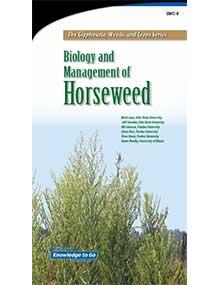
Biology and Management of Horseweed
Reviewed
Editor’s note
The following abstract describes a publication that is only available as a downloadable PDF.
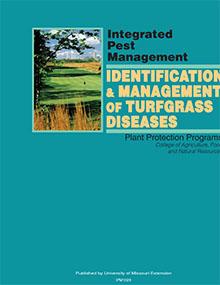
Identification and Management of Turfgrass Diseases
Reviewed
This publication is designed to be a useful reference for diagnosticians, turfgrass managers, industry representatives and others who want to learn how to diagnose and manage common turfgrass diseases caused by plant pathogenic fungi.
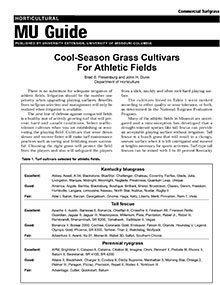
Cool-Season Grass Cultivars for Athletic Fields
Reviewed
This guide provides turfgrass recommendations for athletic fields, emphasizing irrigation, traffic-tolerant cultivars, and effective seeding methods.
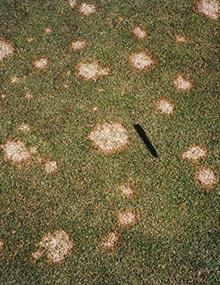
Identification and Management of Turfgrass Diseases, Page 15
Reviewed
Microdochium patch is most common on new bentgrass greens under cover or in situations where nitrogen fertility was high going into the winter.
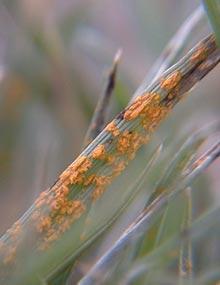
Identification and Management of Turfgrass Diseases, Page 18
Reviewed
Rust occurs to some extent on all turfgrasses, but the rust fungi are generally host specific. Rust is most severe on susceptible cultivars of Kentucky bluegrass, tall fescue, perennial ryegrass and zoysiagrass. Rust symptoms usually appear in late August to early September and continue through the fall months.

Identification and Management of Turfgrass Diseases, Page 21
Reviewed
Take-all patch of creeping bentgrass is a soilborne disease caused by a darkly pigmented, ectotrophic root-infecting fungus. The disease is most common on new greens. It also occurs on reconstructed greens, especially when methyl bromide had been used in the renovation.
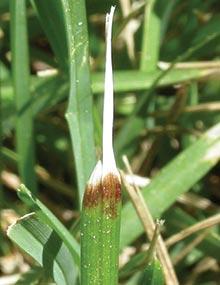
Identification and Management of Turfgrass Diseases, Page 04
Reviewed
Ascochyta leaf blight results in the rapid development of large irregularly shaped, straw-colored patches on Kentucky bluegrass and occasionally on tall fescue and perennial ryegrass during the summer. Because Ascochyta spp. are primarily foliar pathogens, diseased turfgrass usually recovers relatively quickly.
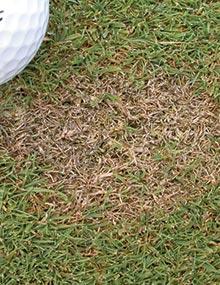
Identification and Management of Turfgrass Diseases, Page 07
Reviewed
Dead spot is a disease of new sand-based bentgrass greens or renovated greens where methyl bromide was used in the renovation. The disease first occurs one to four years after construction or renovation, gradually disappearing one to three years after its first occurrence.
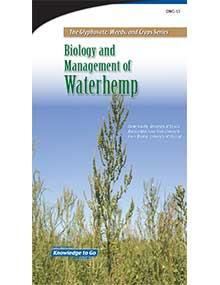
Biology and Management of Waterhemp
Reviewed
Editor’s note
The following abstract describes a publication that is only available as a downloadable PDF.
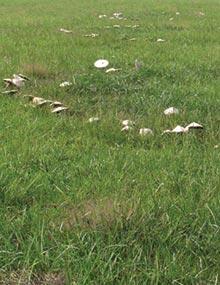
Identification and Management of Turfgrass Diseases, Page 10
Reviewed
Fairy ring is caused by more than 60 basidiomycete fungi, including those producing the familiar puffballs and toadstools. The rings result from the activities of these fungi growing radially through the thatch or soil, rather than from a direct parasitic relationship with the turfgrass.
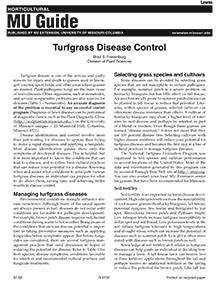
Turfgrass Disease Control
Revised
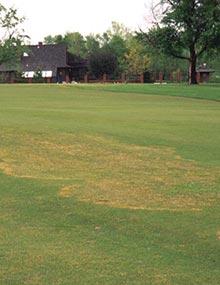
Identification and Management of Turfgrass Diseases, Page 13
Reviewed
Large patch is a cool-season disease of warm-season grasses. Symptoms are most common when these grasses are either entering or coming out of dormancy.
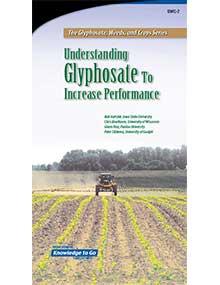
Understanding Glyphosate to Increase Performance
Editor’s note
The following abstract describes a publication that is only available as a downloadable PDF.
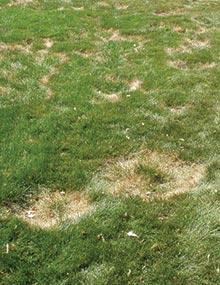
Identification and Management of Turfgrass Diseases, Page 16
Reviewed
Necrotic ring spot is a destructive disease of Kentucky bluegrass, but may also occur on red fescue and annual bluegrass. The disease is particularly damaging to bluegrass.
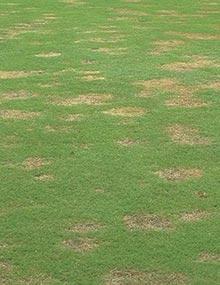
Identification and Management of Turfgrass Diseases, Page 19
Reviewed
Spring dead spot is a destructive disease of common bermudagrass and bermudagrass hybrids throughout the northern range of its adaptation in the U.S.
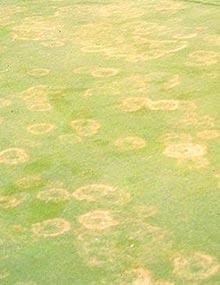
Identification and Management of Turfgrass Diseases, Page 22
Reviewed
Yellow patch is a cool-season disease that occurs on bentgrass and annual bluegrass putting greens and sometimes on higher-gut Kentucky bluegrass.
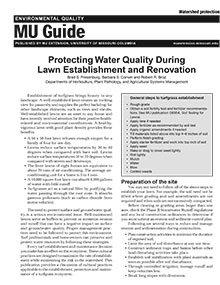
Protecting Water Quality During Lawn Establishment and Renovation
Reviewed
Establishing a healthy lawn enhances your landscape and benefits the environment. Learn best practices to protect water quality during lawn establishment.
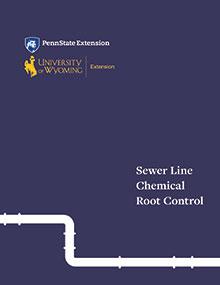
Sewer Line Chemical Root Control (Category 5B)
Reviewed $40
This manual contains information that applicators must be familiar with to become a certified sewer line root control applicator.
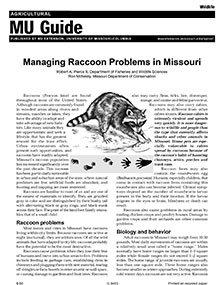
Managing Raccoon Problems in Missouri
Reviewed
Raccoons have adapted to urban areas, causing damage to property and posing health risks. Learn how to manage and prevent raccoon problems.
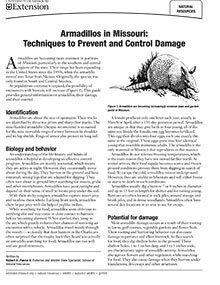
Armadillos in Missouri: Techniques to Prevent and Control Damage
Reviewed
Armadillos are becoming more common in Missouri. Visit our site for our Armadillos in Missouri: Techniques to Prevent and Control Damage resource.
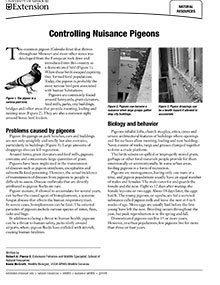
Controlling Nuisance Pigeons
Reviewed
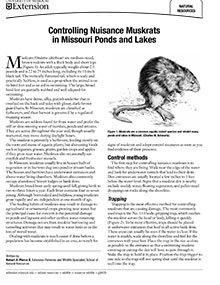
Controlling Nuisance Muskrats in Missouri Ponds and Lakes
Reviewed
Muskrats can damage ponds and crops through burrowing and feeding. This guide outlines effective control methods.
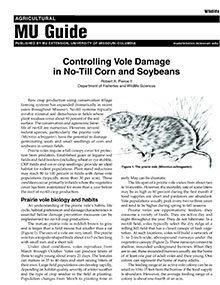
Controlling Vole Damage in No-Till Corn and Soybeans
Reviewed
Voles in no-till fields can reduce corn and soybean stands by up to 100%. Learn to identify damage and manage vole populations before planting.
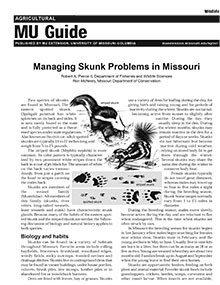
Managing Skunk Problems in Missouri
Reviewed
Striped and eastern spotted skunks inhabit diverse environments and may cause issues like lawn damage, poultry predation, and unpleasant odors.